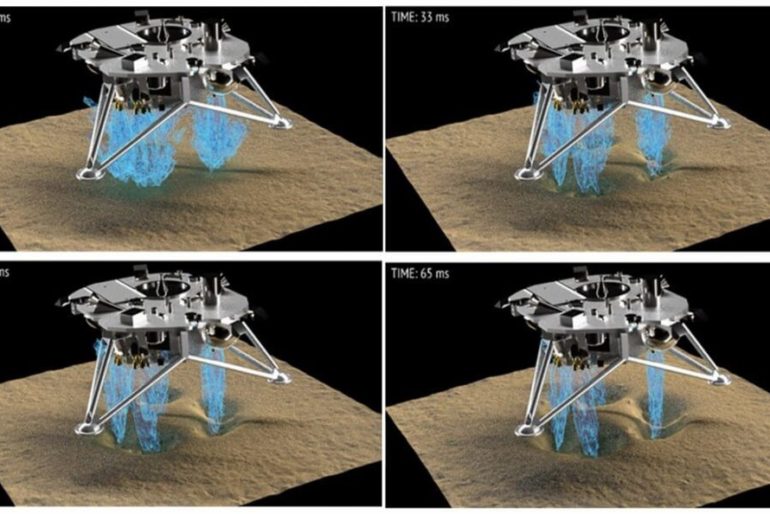(Huntsville, Ala. | April 9, 2020) – CFD Research Corporation announced today the recent award of three contracts from NASA’s Marshall Spaceflight Center (MSFC) totaling $1.5M to further develop capabilities used to study plume-regolith interactions for lunar and planetary landers. The combination of efforts under an SBIR Phase II, an STTR Phase II Extension, and a Phase III contract will further mature and transition the technology to support lunar plume surface interaction and the Artemis project.
“Any Moon or Mars rocket descent or ascent is a dynamic event that results in dust/debris clouds that can obscure visibility and generate particles accelerated to such high velocities and kinetic energy that they can potentially damage the vehicle itself as well as nearby objects,” explained Dr. Robert Harris, CFD Research principal investigator for two of the projects. “The rocket plume-regolith interaction also produces craters that pose challenges to vehicle stability and surface operations.”
“These issues constitute a high risk for successful robotic and human exploration activities and are exacerbated with the planned future human exploration of Mars because the larger human class landers feature multi-engine clusters at order of magnitude higher thrust levels than current robotic landers,” commented Dr. Manuel Gale, CFD Research principal investigator for one of the projects. “Studying these problems with terrestrial experiments or with traditional simulation tools is difficult.”
To overcome this lack of simulation capability, CFD Research developed the Gas-Granular Flow Solver (GGFS) to simulate the multi-phase gas-particle flows while accurately capturing the interaction and transport properties for the complex regolith compositions (including size/shape/distribution) in the extra-terrestrial environments (low gravity / near vacuum) found on the Moon and Mars.
These new NASA projects are aimed at improving GGFS capabilities and performance. Enhancements will include: incorporation of vehicle dynamics during propulsive descent and ascent using an overset/moving-mesh approach with 6-DOF motion, multi-component gas and polydisperse granular mixture models for physically-consistent plume/surface interactions, extensions to simulating plume flow in the rarefied lunar environment, GPU-implementation and performance assessments, and verification and validation.
In earlier projects, the prototype simulation tool was used by NASA Marshall Space Flight Center (MSFC) engineers to analyze plume/surface interaction of the InSight Mars Lander and compare the simulation results with the crater reconstruction effort at MSFC. Dr. Peter Liever, CFD Research Technical Fellow, Dr. Gale and MSFC colleagues received a MSFC group achievement award for the simulation and analysis work performed. The GGFS simulation capability has been adopted by NASA Lunar and Mars lander project offices and concept development organizations, as well as NASA’s commercial partners for risk reduction support.
“The GGFS tool is providing valuable insights for the Space Exploration community towards addressing fundamental uncertainties regarding the impact of particle debris, dust liberation, and landing surface erosion and cratering from propulsive landings,” said Sami Habchi, CFD Research executive vice-president. “We are proud that CFD Research can contribute to this important mission.”

